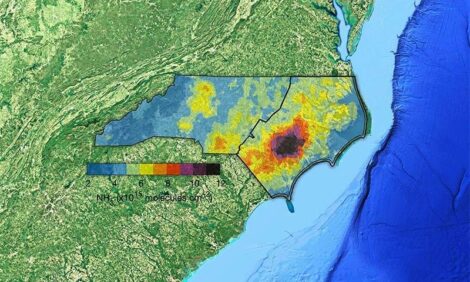



Dietary Linoleic Acid Content Can Predict Carcass Fat Quality
Dietary C18:2n-6 (linoleic acid) content was a better predictor of carcass fat iodine value than diet iodine value, according to researchers based at Kansas State University.The effects of dietary iodine value product on growth performance and carcass fat quality of finishing pigs were studied by J.M. Benz and co-authors at Kansas State University and published in Journal of Animal Science.
A total of 120 barrows (initial bodyweight = 47.9 ±3.6 kg; PIC 1050) were used in an 83-day study to determine the effects of dietary iodine value (IV) product (IVP) on growth performance and fat quality.
The researchers explain that the pigs were blocked by bodyweight and randomly allotted to one of six treatments with two pigs per pen and 10 pens per treatment.
Dietary treatments were fed in three phases and formulated to three IVP concentrations (low, medium, and high) in each phase.
The treatments used were:
- corn-soybean meal control diet with no added fat (low IVP)
- corn-extruded expelled soybean meal (EESM) diet with no added fat (medium IVP)
- corn-soybean meal diet with 15 per cent distillers dried grains with solubles and choice white grease (DDGS + CWG; medium IVP)
- corn-soybean meal diet with low CWG (medium IVP)
- corn-EESM diet with 15 per cent DDGS (high IVP), and
- corn-soybean meal diet with high CWG (high IVP).
On day 83, pigs were slaughtered and backfat and jowl fat samples were collected and analysed. The calculated and analysed dietary IVP values were highly correlated (r2=0.86, P<0.01).
Pigs fed the control diet, EESM or high CWG had greater (P<0.05) average daily gain (ADG) than pigs fed EESM + DDGS. Pigs fed the control diet had greater (P<0.05) average daily feed intake (ADFI) than pigs fed all other diets. Pigs fed EESM + DDGS and high CWG had improved (P<0.05) gain-to-feed ratio (G:F) than those fed the control diet or DDGS + CWG. Pigs fed diets with DDGS had more (P<0.05) backfat and jowl fat IV, C18:2n-6, and polyunsaturated fatty acids (PUFA) and less saturated fatty acids (SFA) than pigs fed all other treatments.
Pigs fed EESM had more (P<0.05) backfat and jowl fat IV, C18:2n-6, and PUFA than pigs fed the control diet, low CWG or high CWG. Pigs fed low CWG or high CWG had more (P<0.05) jowl fat IV than control pigs.
Benz and co-authors commented that feeding ingredients high in unsaturated fatty acids, such as DDGS and EESM, had a greater impact on fat IV than CWG, even when diet IVP was similar.
Therefore, they said, IVP is a poor predictor of carcass fat IV in pigs fed diets with different fat sources and amounts of unsaturated fats formulated with similar IVP. Dietary C18:2n-6 (linoleic acid) content was a better predictor of carcass fat IV than diet IVP, concluded the researchers.
Reference
Benz J.M., M.D. Tokach, S.S. Dritz, J.L. Nelssen, J.M. DeRouchey, R.C. Sulabo and R.D. Goodband. 2011. Effects of dietary iodine value product on growth performance and carcass fat quality of finishing pigs. Journal of Animal Science, 89 (5): 1419-1428. doi: 10.2527/jas.2010-3126
Further Reading
| - | You can view the full report (fee payable) by clicking here. |
June 2011







